Ready to learn how to write a resume that gets you hired? Look no further!
If you want a resume template that will help you land more interviews, head over to our free AI resume builder!
In this comprehensive guide, we'll cover the strategies and methods behind taking your template and transforming it into a job-winning resume!
Let's Be Honest: Writing A Resume Is The Worst
Writing a great resume is one of the most frustrating parts of the job search. We end up sifting through dozens of articles that often contain conflicting information. This can leave us confused and unable to make any progress since we aren't sure which advice to follow.
One article says “one-page MAX” while another says “a two or three page resume that includes all of your experience is the way to go.”
Another tells you to “write a quick summary highlighting your personality and experience” while a different article claims that “summaries are a waste of space.”
You scrape together your best effort and hit “Submit,” sending your resume into the ether. When you don't hear back, you wonder what went wrong.
“Was it the single page or the lack of a summary? Honestly, who gives a s**t at this point. I'm sick of sending out 10 resumes every day and hearing nothing but crickets.”
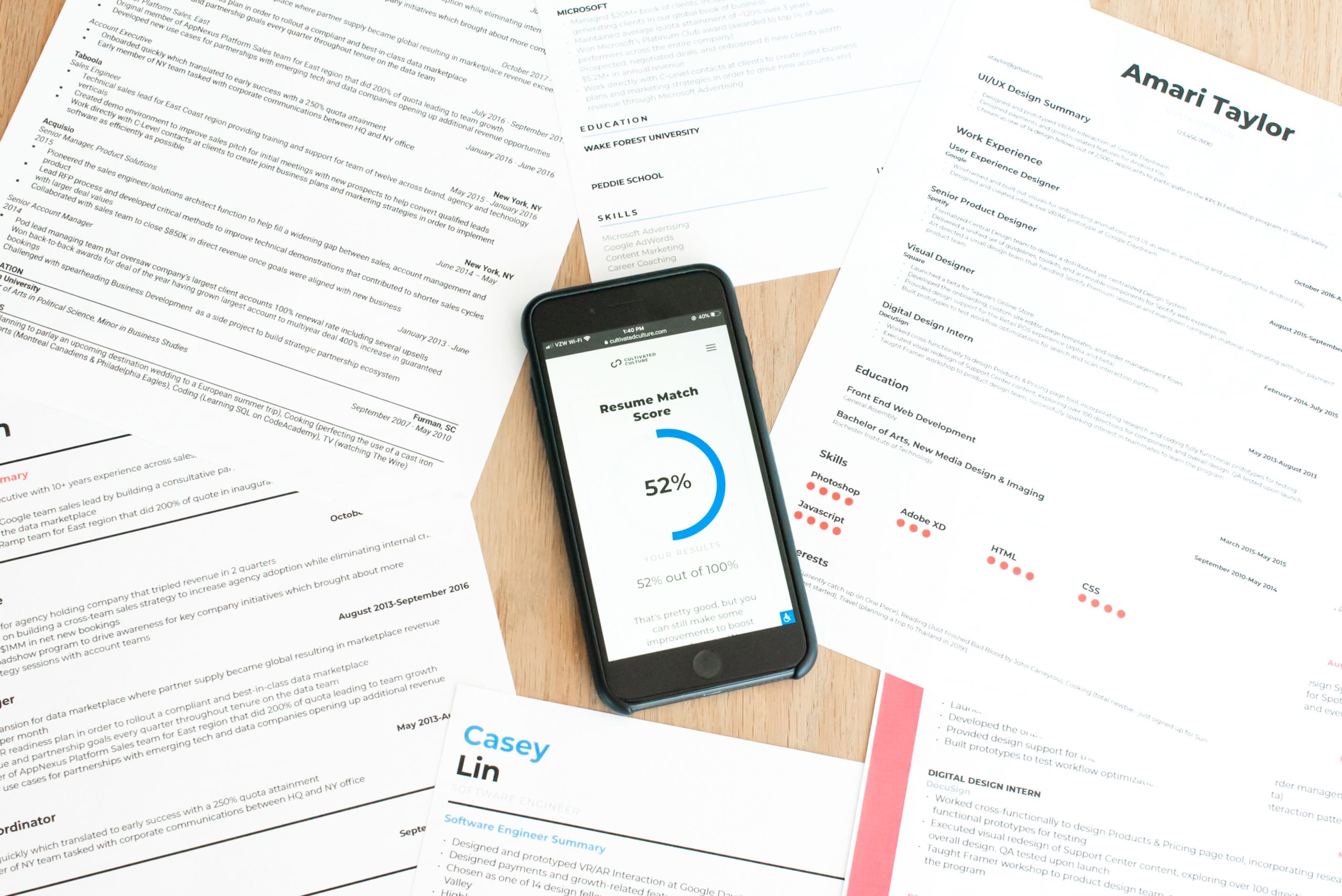
Writing a resume can feel so tedious, but it's not your fault!
The real reason it's so tough to write a resume is because most of the advice out there hasn't been proven to actually help you land a job. If you don't know what consistently works, it's impossible to create a system around resume creation.
It's easy to say “one page works best” when you've seen it happen a few times. But how does this advice hold up when we look at 100 resumes across different industries, experience levels, and job titles?
That's what this article aims to answer.
Over the past several years, I've personally applied to hundreds of companies and coached hundreds of people through the job search process. This gave me a huge opportunity to measure, analyze, and test the effectiveness of different resume strategies at scale.
This article is going to walk through everything I've learned about the best ways to write a resume, including:
- Mistakes that 95%+ of people make, causing their resumes to get tossed immediately
- 3 things that consistently appear in the resumes of highly effective job seekers (who go on to land jobs at the world's best companies)
- A quick hack that will help you stand out from the competition and instantly build relationships with whoever is reading your resume (increasing your chances of hearing back and getting hired)
- The exact resume template that got me interviews and offers at Google, Microsoft, Twitter, Uber, and more
The strategies you're about to learn have helped people just like you land jobs at Google, Facebook, Apple, Amazon, Microsoft, ESPN, Deloitte, Goldman Sachs, and more.
When you're ready, you can take everything you learn in this post and use it to write a resume that actually gets results with my free AI resume builder. You can choose from 8 different resume templates to help you create an eye-catching, ATS-friendly resume:

Free Job-Winning Resume Templates, Build Yours In No Time.
Choose a resume template below to get started:
Before we get to the unconventional strategies that will help set you apart, we need to first make sure our foundational bases are covered. That starts with understanding the mistakes most job seekers make so we can make our resume bulletproof.
Resume Mistakes That 95% Of People Make
Most resumes that come through an online portal or across a recruiter's desk are tossed out because they violate a simple rule.
When recruiters scan a resume, the first thing they look for are mistakes. Your resume could be fantastic, but if you violate a rule like using an unprofessional email address or improper grammar, it's going to get tossed out.
Our goal is to fully understand the triggers that cause recruiters/ATS systems to make the snap decisions on who stays and who goes.
In order to get inside the heads of these decision makers, I collected data from dozens of recruiters and hiring managers across industries. These people have several hundred years of hiring experience under their belts and they've reviewed 100,000+ resumes across industries.
They broke down the five most common mistakes that cause them to cut resumes from the pile:

The 4 Most Common Resume Mistakes (According To Recruiters & Hiring Managers):
Mistake #1: Sloppiness (typos, spelling errors, & grammatical mistakes). Close to 60% of resumes have some sort of typo or grammatical issue.
Solution: Have your resume reviewed by three separate sources – spell checking software, a friend, and a professional. Spell check should be covered if you're using Microsoft Word or Google Docs to create your resume.
A friend or family member can cover the second base, but make sure you trust them with reviewing the whole thing. You can always include an obvious mistake to see if they catch it.
Finally, you can hire a professional editor on Upwork. It shouldn't take them more than 15-20 minutes to review so it's worth paying a bit more for someone with high ratings and lots of hours logged.
Mistake #2: Summaries are too long and formal. Many resumes include summaries that consist of paragraphs explaining why they are a “driven, results oriented team player.” When hiring managers see a block of text at the top of the resume, you can bet they aren't going to read the whole thing. If they do give it a shot and read something similar to the sentence above, they're going to give up on the spot.
Solution: Summaries are highly effective, but they should be in bullet form and showcase your most relevant experience for the role. Think of them as a highlight reel – the Sports Center Top 10 of your resume – instead of a paragraph of who you are and what you're looking for.
For example, if I'm applying for a new business sales role, my first bullet might read “Responsible for driving $11M of new business in 2019, achieved 168% attainment (#1 on my team).” I talk more about resume objectives and summaries in this post.
Mistake #3: Too many buzz words. Remember our driven team player from the last paragraph? Phrasing like that makes hiring managers cringe because your attempt to stand out actually makes you sound like everyone else.
Solution: Instead of using buzzwords, write naturally, use bullets, and include quantitative results whenever possible.
Would you rather hire a salesperson who “is responsible for driving new business across the healthcare vertical to help companies achieve their goals” or “drove $15M of new business last quarter, including the largest deal in company history”? Skip the buzzwords and focus on results.
You can read more about writing highly effective resume bullets in this guide or you can use our free resume bullet analyzer tool.
Mistake #4: Having a resume that is more than one page. The average employer spends six seconds reviewing your resume – if it's more than one page, it probably isn't going to be read. When asked, recruiters from Google and Barclay's both said multiple page resumes “are the bane of their existence.”
Solution: Increase your margins, decrease your font, and cut down your experience to highlight the most relevant pieces for the role. It may seem impossible, but it's worth the effort. When you're dealing with recruiters who see hundreds of resumes every day, we want to make their lives as easy as possible.
More Common Resume Mistakes & Facts (Backed By Industry Research)
In addition to personal feedback, I combed through dozens of recruitment survey results to fill any gaps my contacts might have missed. Here are a few more items you may want to consider when writing your resume:
- The average interviewer spends 6 seconds scanning your resume
- The majority of interviewers have not looked at your resume until
you walk into the room - Resumes with a link to a comprehensive LinkedIn profile have a 71% better chance of hearing back
- 76% of resumes are discarded for an unprofessional email address
- Resumes with a photo have an 88% rejection rate
- 58% of resumes have typos
- Applicant tracking software typically eliminates 75% of resumes due to a lack of keywords and phrases being present
Now that you know every mistake you need to avoid, the first item on your to-do list is to comb through your current resume and make sure it doesn't violate anything mentioned above.
Once you have a clean resume, you can start to focus on more advanced tactics that will really make you stand out. There are a few unique elements you can use to push your application over the edge and finally get your dream company to notice you.
Steal The Resume Template That Got Me Offers At Google, Microsoft, & Twitter
> Click here to get free, instant access to the resume template & bonuses <<
The 3 Elements Of A Resume That Will Get You Hired
My analysis showed that in order to write a resume that is highly effective, it typically includes three specific elements:
- Quantitative results
- A simple design
- Quirky interests section
This section breaks down all three elements and shows you how to maximize their impact.
#1: Quantitative Results
Most resumes lack them.
Which is a shame because my data shows that they make the biggest difference between resumes that land interviews and resumes that end up in the trash.
Here's an example from a recent resume that was emailed to me:
❌ Bad Example of Experience
- Identified gaps in policies and processes and made recommendations for solutions at the department and institution level
- Streamlined processes to increase efficiency and enhance quality
- Directly supervised three managers and indirectly managed up to 15 staff on multiple projects
- Oversaw execution of in-house advertising strategy
- Implemented comprehensive social media plan
As an employer, that tells me absolutely nothing about what to expect if I hire this person.
They executed an in-house marketing strategy. Did it work? How did they measure it? What was the ROI?
They also identified gaps in processes and recommended solutions. What was the result? Did they save time and operating expenses? Did it streamline a process resulting in more output?
Finally, they managed a team of three supervisors and 15 staffers. How did that team do? Was it better than the other teams at the company? What results did they get and how did those improve under this person's management?
See what I'm getting at here?
These types of bullets talk about daily activities, but companies don't care about what you do every day. They care about results. By including measurable metrics and achievements in your resume, you're showcasing the value that the employer can expect to get if they hire you.
Let's take a look at revised versions of those same bullets:
✅ Good Example of Experience
- Managed a team of 20 that consistently outperformed other departments in lead generation, deal size, and overall satisfaction (based on our culture survey)
- Executed in-house marketing strategy that resulted in a 15% increase in monthly leads along with a 5% drop in the cost per lead
- Implemented targeted social media campaigns across Instagram & Pinterest, driving an additional 50,000 monthly website visits and generating 750 qualified leads in 3 months
If you were in the hiring manager's shoes, which resume would you choose?
That's the power of including quantitative results.
Note: Just because you don't work in sales, marketing, or a “numbers-driven” field, doesn't mean that you can't add measurable metrics to your resume. There are other categories that qualify here, including:
- Time – How long did it take you to achieve something? Was that faster than usual or ahead of the timeline? If so, by how much?
- Scope – What was the measurable scope of the project you worked on? How many people did you manage on this project? How many people use the product you work on? What was the budget for this project? Etc.
- Efficiency / Productivity – Were you able to save budget? Save people time? Improve outcomes?
- Comparison – How did your results compare to the past? Did you do things faster? Better? Can you quantify and compare that to previous work?
Finally, every single person at a company has a role there because they impact the bottom line, either directly or indirectly. If you don't feel like you have a direct impact, go find the people who leverage your work who do!
For example, let's say you're a designer who made a brand new pitch deck for the sales team. Can you go talk to the team and:
- Ask how many deals they've closed with your deck vs. the previous deck
- Survey them and ask them to rate your deck compared to the previous deck
- Etc.
If your deck has led to more deals, how much are they worth? You played a role in those results! If your deck has better ratings and feedback than previous decks, add that in!
You can always find a quantifiable way to measure your value if you're willing to get creative.
If you want more input, just head over to this article and find out 5 ways you can add measurable results to your resume.
#2: Simple, Aesthetic Design That Hooks The Reader
These days, it's easy to get carried away with our mission to “stand out.” I've seen resume overhauls from graphic designers, video resumes, and even resumes hidden in a box of donuts.
While those can work in very specific situations, we want to aim for a strategy that consistently gets results. The format I saw the most success with was a black and white template with sections in this order:
- Summary/Objective
- Experience
- Education
- Volunteer Work (if you have it)
- Skills/Interests
This template is effective because it's familiar and easy for the reader to digest.
As I mentioned earlier, hiring managers scan resumes for an average of 6 seconds. If your resume is in an unfamiliar format, those 6 seconds won't be very comfortable for the hiring manager. Our brains prefer things we can easily recognize. You want to make sure that a hiring manager can actually catch a glimpse of who you are during their quick scan of your resume.
If we're not relying on design, this hook needs to come from the Summary section at the top of your resume.
This section should be done in bullets (not paragraph form) and it should contain 3-4 highlights of the most relevant experience you have for the role. For example, if I was applying for a New Business Sales position, my summary could look like this:
Sales Executive Summary
- Drove quarterly average of $11M in new business with a quota attainment of 128% (#1 on my team)
- Received award for largest sales deal of the year
- Developed and trained sales team on new lead generation process that increased total leads by 17% in 3 months, resulting in 4 new deals worth $7M
Those bullets speak directly to the value I can add to the company if I was hired for the role.
#3: An “Interests” Section That's Quirky, Unique, & Relatable
This is a little “hack” you can use to instantly build personal connections and positive associations with whoever is reading your resume.
Most resumes have a skills section but sometimes it doesn't offer enough value.
Research shows that people rely on emotions, not information, to make decisions. Big brands use this principle all the time – emotional responses to advertisements are more influential on a person’s intent to buy than the content of an ad.
You probably remember Apple's famous “Get A Mac” campaign:
When it came to specs and performance, Macs didn't blow every single PC out of the water. But these ads solidified who was “cool” and who wasn't, which was worth a few extra bucks to a few million people.
By tugging at our need to feel “cool,” Apple's campaign led to a 42% increase in market share and a record sales year for MacBooks.
Now we're going to take that same tactic and apply it to your resume.
If you can evoke an emotional response from your recruiter, you can influence the mental association they assign to you. This gives you a major competitive advantage.
Let's start with a question — what could you talk about for hours?
It could be cryptocurrency, cooking, World War 2, World of Warcraft, or how Google's bet on segmenting their company under Alphabet is going to impact the technology sector over the next 5 years.
Did a topic (or two) pop into your head? Great.
Now think about what it would be like to have a conversation with someone who was just as passionate and knew just as much as you did on the topic. It'd be pretty awesome, right? Finally, someone who gets it!
That's exactly the kind of emotional response we're aiming to get from a hiring manager.
There are five “neutral” topics out there that people enjoy talking about:
- Food/Drink
- Sports
- College
- Hobbies
- Geography (travel, where people are from, etc.)
These topics are present in plenty of interest sections, but we want to take them one step further.
Let's say you had the best night of your life at the Full Moon Party in Thailand. Which of the following two options would you be more excited to read:
- Traveling
- Ko Pha Ngan beaches (where the full moon party is held)
Or, let's say that you went to Duke (an ACC school) and still follow their basketball team. Which would you be more pumped about:
- College Sports
- ACC Basketball (Go Blue Devils!)
In both cases, the second answer would probably evoke a larger emotional response because they are tied directly to your experience.
I want you to think about your own interests that fit into the five categories I mentioned above.
Now I want you to write a specific favorite example associated with each interest in parentheses next to your original list. For example, if you wrote travel you can add (ask me about the time I was chased by an elephant in India) or (specifically meditation in a Tibetan monastery).
Here is the exact set of interests I used on my resume when I interviewed at Google, Microsoft, and Twitter:
ABC Kitchen's Atmosphere, Stumptown Coffee (primarily cold brew), Michael Lewis (Liar's Poker), Fishing (especially fly), Foods That Are Vehicles For Hot Sauce, ACC Sports (Go Deacs!) & The New York Giants
If you want to cheat here, my experience shows that anything about hot sauce is an instant conversation starter.
Resume Fundamentals: Format, Fonts, & Pairing With A Cover Letter
Now that you know what mistakes to avoid and what elements to focus on when you write a resume, it's time to get back to the basics. This stuff isn't the sexiest, but you need to make sure that the fundamentals of your resume are on point if you want to edge out the competition and win the job.
What Resume Format Works Best?
This is one of the most common questions I get from people who are planning to write a resume. When it comes to an acceptable resume layout, there are four main templates to choose from:
Resume Format Option #1: Chronological
The chronological resume is one of the most common formats, and probably what you're using right now. It focuses on listing out your professional experience starting with your current position and working your way back. If you're leveraging a chronological resume format, you should aim to cap your experience at 10-15 years (when applicable) and don't be afraid to include side projects or part time jobs.
Resume Format Option #2: Functional
Functional resume formats emphasize skills and experience over history. This resume is great for people who are chasing new industries that don't have a clear cut path. The blockchain/cryptocurrency space is a great example here – you can't get a degree in blockchain and most of the hires in the industry are brand new to the space so companies prioritize transferable skills over work history.
Functional resumes are also great for people who have gaps in their employment. Focusing on your skills and tangible results reduces the spotlight on any lapses you might have and improves your chances of getting hired
Resume Format Option #3: Combination
Combination resumes are a cross between functional and chronological. This is typically leveraged by candidates who want to highlight major projects and accomplishments because of their relevance to the position, while showcasing their extensive work history.
Combination formats typically split the white space into a section that solely focuses on specific projects and achievements along with a section that highlights experience in a minimalistic fashion (typically the only information listed is the company name, job title, and dates).
Resume Format Option #4: Creative/Non-Traditional
Creative resumes step outside of the 8.5 x 11 sheet of paper and help candidates showcase their experience and skills in a non-traditional fashion. This could be an interactive website like Robby Leondari's, a mock up of the company's website like Philippe's, or a video like Mark's:
When it comes to choosing a resume layout, there is no “best” option for everyone. The smartest thing you can do is reflect on your situation, your experience, and the job you want. Then compare those to the options above and pick one that makes the most sense when you're ready to write a resume.
How To Choose A Font For Your Resume (& Why That Matters)
You might have read that and said, “Font? Seriously!? I've got way more important stuff on my plate right now.”
I used to think the same thing until I came across this article on Font Psychology. It consolidated information from 75+ academic studies on the subject that all point to a similar conclusion – fonts have a huge impact on our perception of the written product be it a paper, a website, or a resume.
There are five main font categories in existence today: Serif, Sans Serif, Monospace, Fantasy, and Cursive. Here's an infographic illustrating the emotions that each of these font families evoke in the reader:
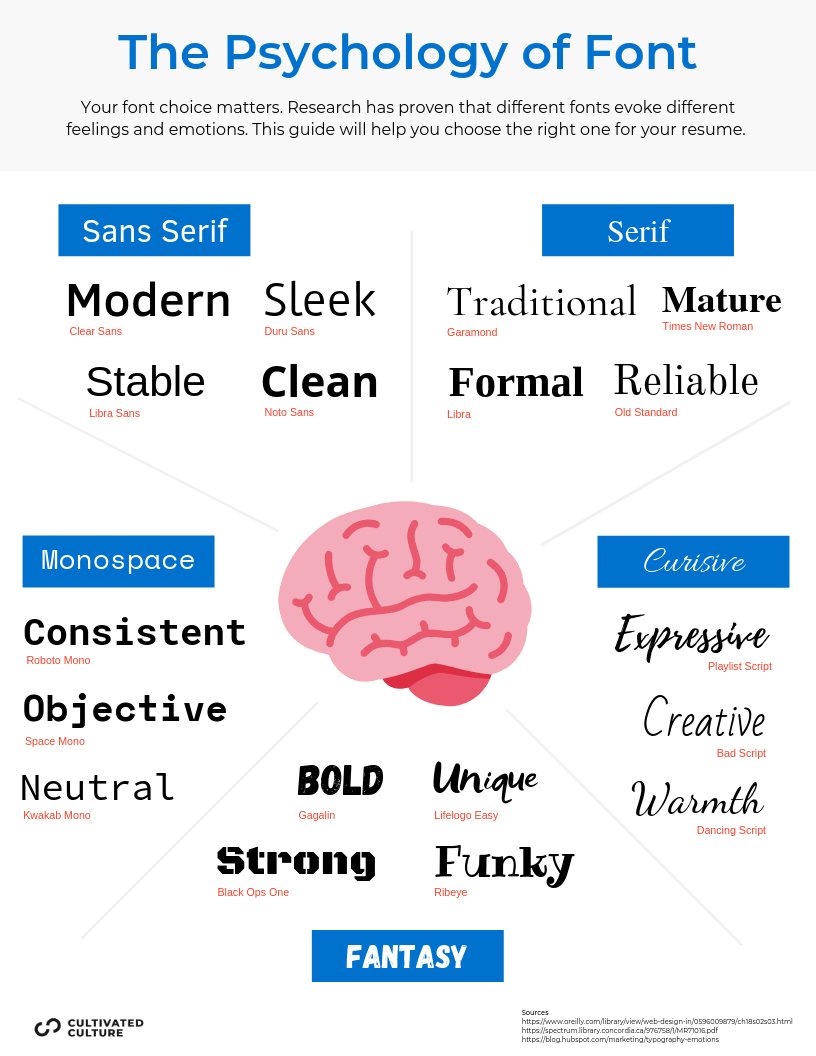
When it comes to the “best” font for your resume, the safest bet is to use something simple and easy to read. In my opinion, Sans Serif fits that bill best so choose from fonts like Avenir, Helvetica, Arial, or Geneva.
How A Great Cover Letter Will Strengthen Your Resume
Many people read this article and come back to me with a single takeaway, “Did you say ONE PAGE??”
How can you possibly fit all of the amazing work you've done in the industry over the past several years along with skills, interests, and references onto a single page?! That's where your cover letter comes in.
The cover letter is your place to expand on the experience, skills, and achievements you highlighted in your resume. Crafting a great cover letter is also going to increase the strength of your overall application. Data shows that 53% of employers prefer candidates who submit a cover letter.
But this article is about how to write a resume that gets results. The main takeaway is that, if done correctly, your cover letter is going to boost your overall application and increase the chances that your (now totally awesome) resume gets a thorough inspection. For a more detailed look into cover letters, check out my guide on Writing A Cover Letter That Actually Gets You Hired.
Finally, when you make it past the final round and the company asks for references, make sure your references match the format and templates you chose for your resume and cover letter.
The Proven Plug & Play Resume Template (With Examples)
Now that we have our fundamentals down, it's time to apply all of these tactics to write a resume. Our goal is to write a resume that increases your chances of hearing back from companies, enhances your relationships with hiring managers, and ultimately helps you score the job offer.
The example below is the exact resume that I used to land interviews and offers at Microsoft, Google, and Twitter. I was targeting roles in Account Management and Sales so this sample is tailored towards those positions. We'll break down each section below:

First, I want you to notice how clean this resume template is. Each section is clearly labeled and separated and flows nicely from top to bottom.
My summary speaks directly to the value I've created in the past around company culture and its bottom line:
- I consistently exceeded expectations
- I started my own business in the space (and saw real results)
- I'm a team player who prioritizes culture
Next, my Experience section aims to flesh out the points made in my Summary. I mentioned exceeding my quota up top so I included two specific initiatives that led to that attainment, including measurable results:
- A partnership leveraging display advertising to drive users to a gamified experience. The campaign resulted in over 30,000 acquisitions and laid the groundwork for the 2nd largest deal in company history.
- A partnership with a top tier agency aimed at increasing conversions for a client by improving user experience and upgrading tracking during a company-wide website overhaul (the client has ~20 brand sites). Our efforts over 6 months resulted in a contract extension worth 316% more than their original deal.
Finally, I included my education at the very bottom starting with the most relevant coursework.
Steal My Proven Resume Template (For Free!)
In order to help you write a resume that gets results, I'm giving away a copy of my proven resume template, access to my Rapid Resume Revamp video course, and a live resume review session. All you need to do is click the link below to get instant access:
Click here to get free, instant access to all of my resume resources.
How To Identify Resume Keywords
If you're not already familiar, Applicant Tracking Systems are pieces of software that companies use to help “automate” the hiring process.
After you hit submit on your online application, the ATS software scans your resume looking for specific keywords and phrases.
If the language in your resume matches up, the software sees it as a good fit for the role and will pass it on to the recruiter. However, even if you're highly qualified for the role but you don't use the right wording, your resume can end up sitting in black hole.
Translation? If you want to boost your chances of getting seen and getting hired, you need to write a resume that is optimized the right way, using the right resume template.
This can be a little tricky to figure out on your own, which is exactly why I created a tool called ResyMatch.io!
ResyMatch is a free resume scanner and optimizer that will help you identify the exact keywords, experience, and formatting you need to include on your resume for each job you apply for!
Here's how it works:
First, head over to ResyMatch.io (or use our shortcut below) upload your resume on the left, and paste your target job description on the right:
ResyMatch will scan your resume and compare it to your target job description. The tool will spit out a match score based on four categories – ATS Best Practices, Hard Skills, Soft Skills, and a Sales Index (which essentially grades you on how well you sell your experience in your bullets):
If you scroll down, you'll get a full breakdown of the exact changes you need to make to improve your resume. ResyMatch will show you the keywords you need to include, the formatting you should aim for, and it will show you how to sell yourself through your bullets and content:
When you write a resume, your goal is to include those keywords at the same frequency that you'd find on the job description.
ResyMatch is free so you can scan your resume and track your progress as you make your updates!
While there's no guaranteed way to beat the online application process, this will definitely help improve your chances of getting your foot in the door!
Use our shortcut below to get started:
How To Write Highly Effective Resume Bullets
At the beginning of this article, I talked about conflicting advice that you see all the time when you're sitting down to write a resume. One page vs. two, summaries vs. objectives, this font or that font…
But the truth is, none of those things matter if the content of your resume doesn't convey your experience and value in a compelling way.
You could have the best template and the best formatting, but if your bullets are vague and generic, you won't get results!
The problem is, most people don't do a great job of illustrating their value in their resume bullets – and I don't blame them!
When I was job searching, understanding how to write “good” bullets wasn't easy. And most of the time I thought I'd finally gotten there, but I still wasn't getting any results.
I realized the problem was that the concept of a “good” bullet was abstract. What made a “good” bullet good and what made a “bad” bullet bad?
I spent the next few years working to develop a formula for great resume bullets to help solve that. It looks like this:

That gave me a starting point for structuring my bullets and it made a HUGE difference.
But applying your bullets to that formula still takes some work. You need to figure out what your skills are, what action words you're using, etc. I wanted to take the guesswork out of it, so I created a resume bullet analyzer tool called ResyBullet.io.
All you need to do is copy a bullet from your resume, paste it into ResyBullet, and the tool will analyze your bullet and give you a score along with objective feedback on how it needs to be improved:
The tool will also save your score history so you can track your progress and A/B test different approaches to your bullets as your score improves.
You can check it out at ResyBullet.io or get started using our shortcut below:
You can also use our resume builder embedded with an AI writing assistance tool that will help you craft job-winning resume bullets!
Write A Resume With Our Free Resume Templates & Resume Builder
If you're ready to start implementing all of the tips and strategies from this article, check out how to write a resume using our free AI resume builder.
Like ResyMatch, ResyBullet, and all of our tools, they are free to use:

Free Job-Winning Resume Templates, Build Yours In No Time.
Choose a resume template below to get started:
You can choose from 8 resume templates that are ATS-friendly (meaning the resume robots can easily scan and read it) and have been approved by recruiters from the world's best companies including Microsoft, Google, Barclays, and more.
ResyBuild also comes with an AI assistant tool that helps you craft personalized, job-winning bullets in a single click. Simply add your experience, hit “Optimize”, and watch the magic happen.
Next, we give you complete control over the content and style of your resume. You can edit the sections, colors, font, sizing, margins, and a whole lot more!
Finally, you can export your resume as a PDF, a TXT file you can import into Microsoft Word, or you can save it to your Google Drive.
Click here to start building a job-winning resume for free!
Resume Statistics
We recently analyzed 125,000+ resumes to answer one question:
“How many candidates are following best practices and where are there opportunities to create a better, more effective resume?”
We looked at file types and formatting. We looked at contact information, education, and interests. We looked at keywords, skills, and experience. We even looked at the specific language used to write these resumes.
The analysis of these resumes led to some pretty interesting results and the goal of this article is to share them with you so that you can understand how to write an effective resume and get an edge on the competition.
Still Have Questions About How To Write A Resume?
No problem! I tried to include as much as I possibly could in this guide, but everyone's situation is unique.
Feel free to leave a comment below or email me with your questions or any feedback you have!





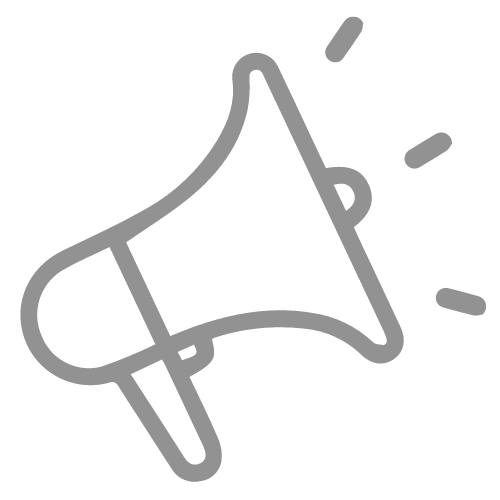


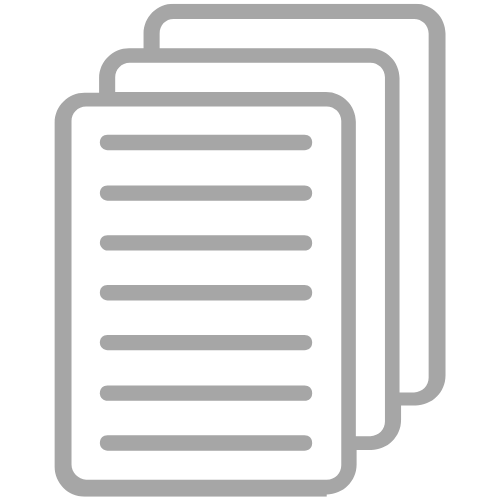





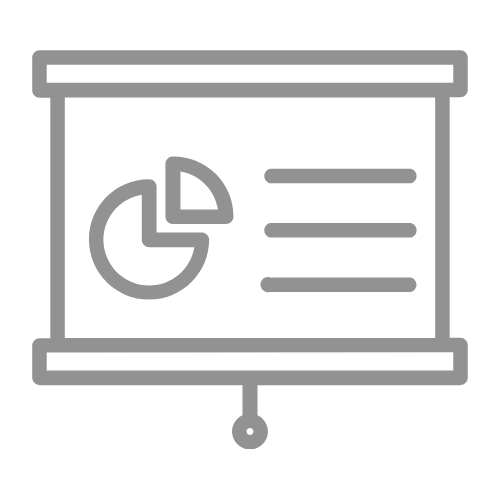

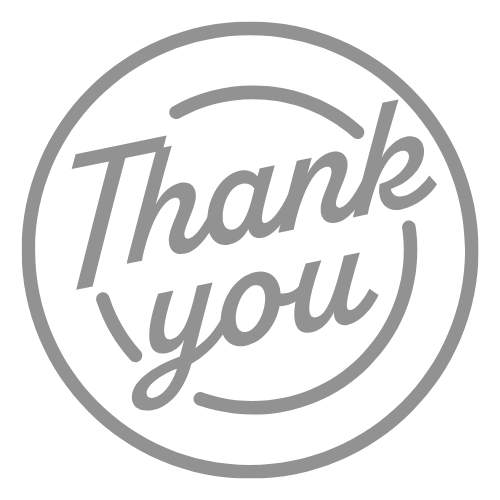
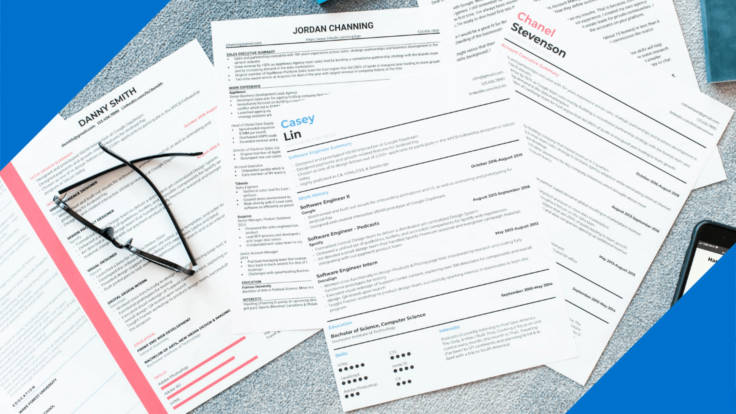
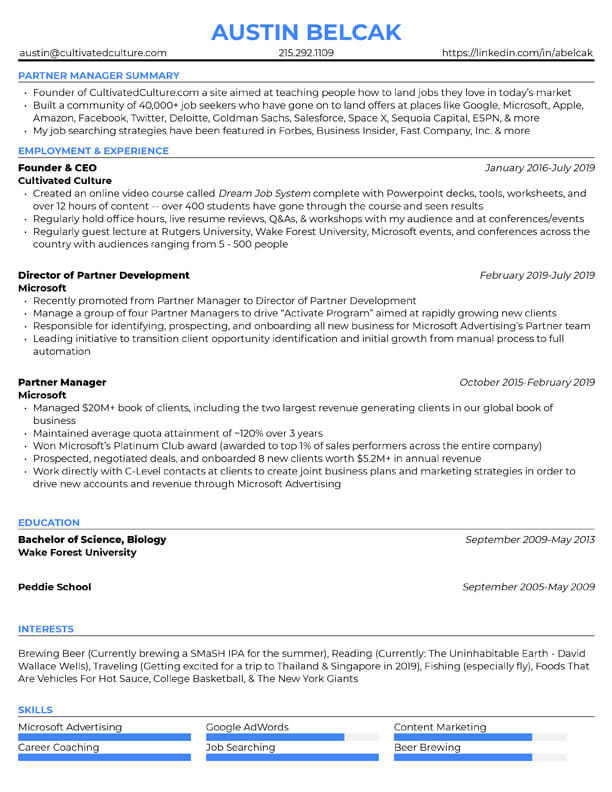
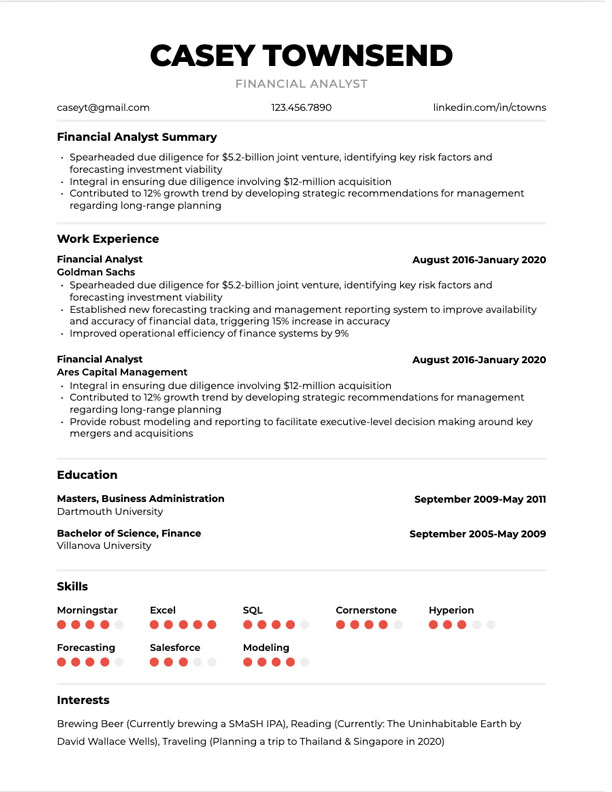




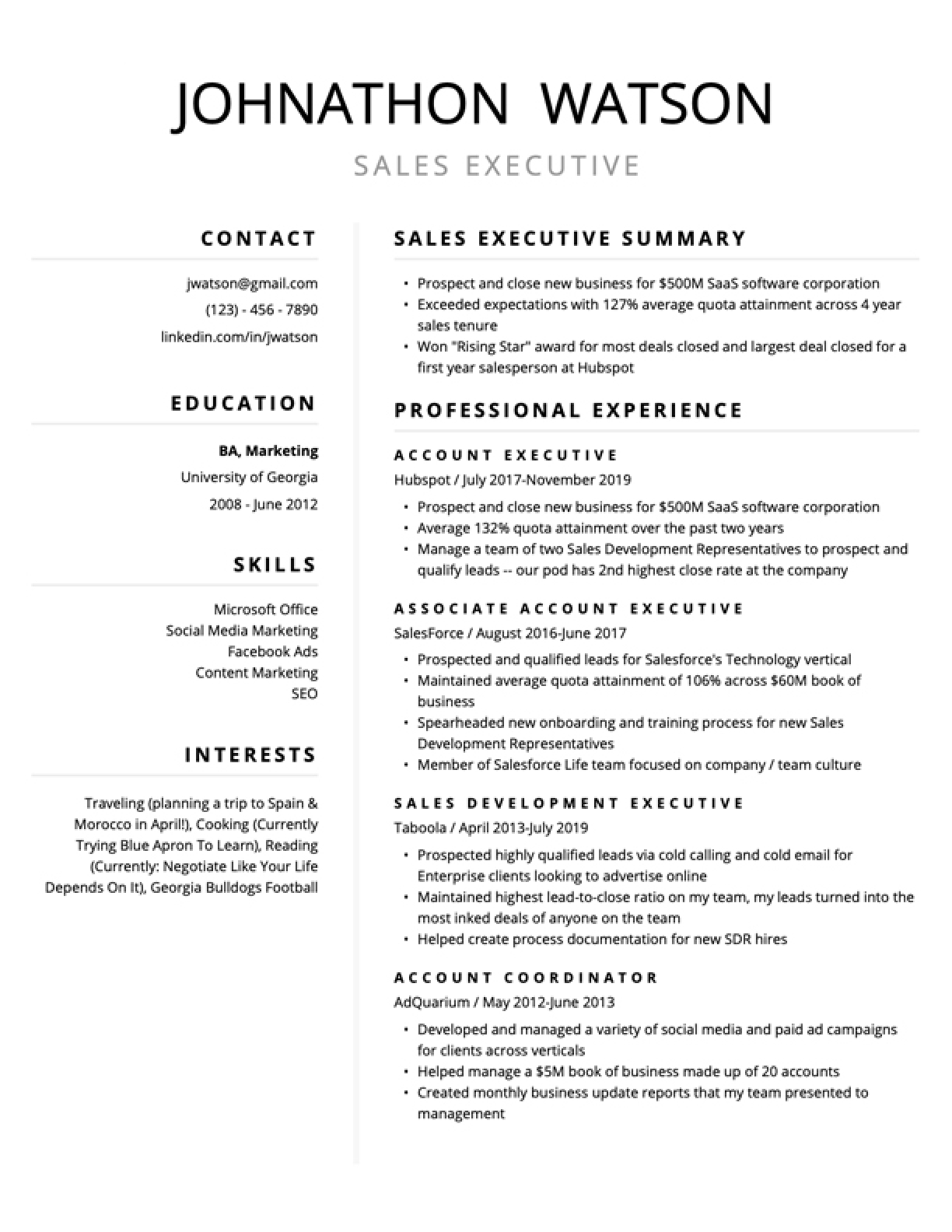

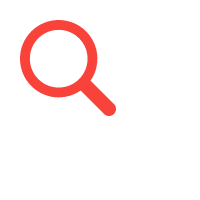
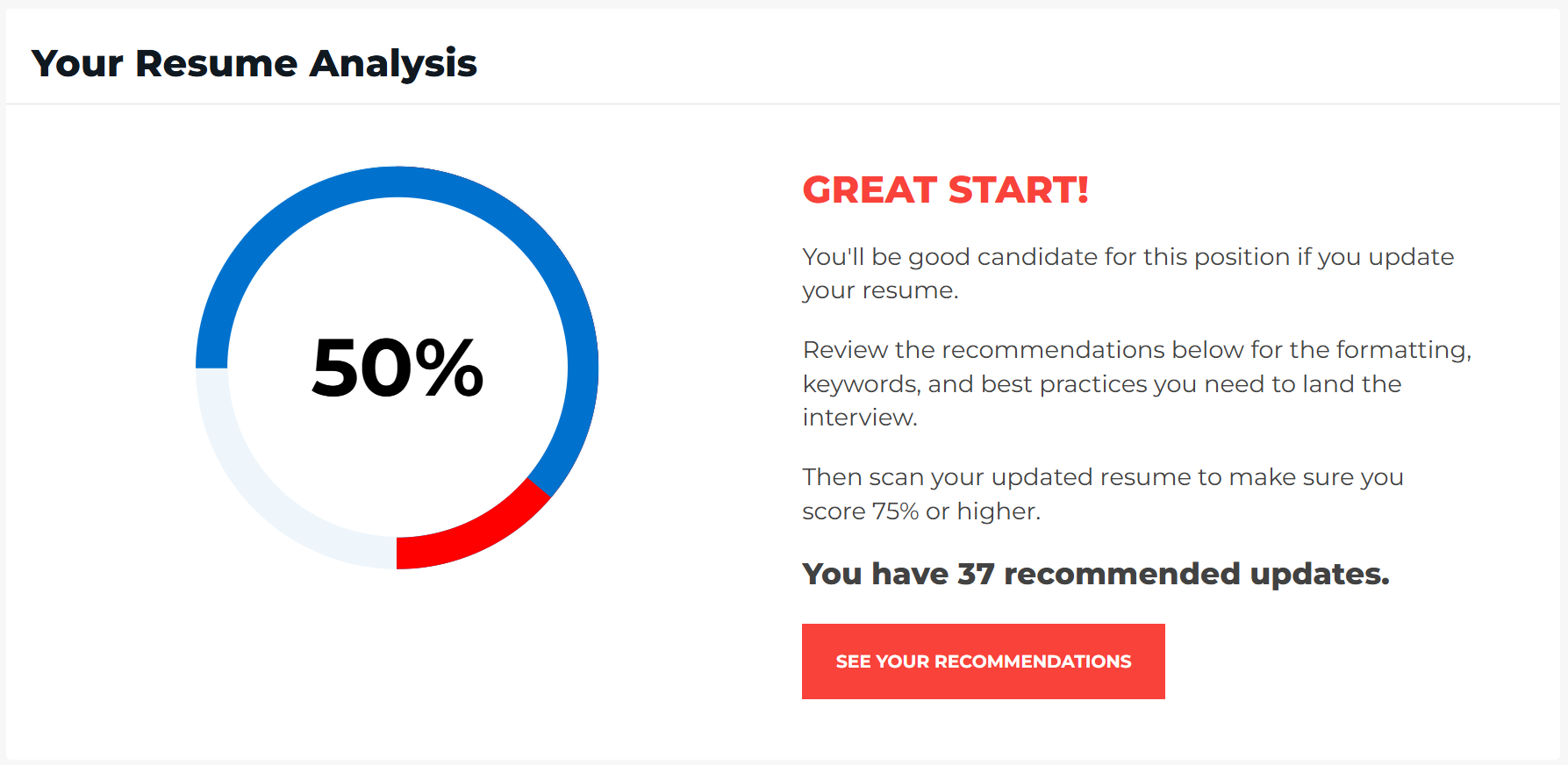
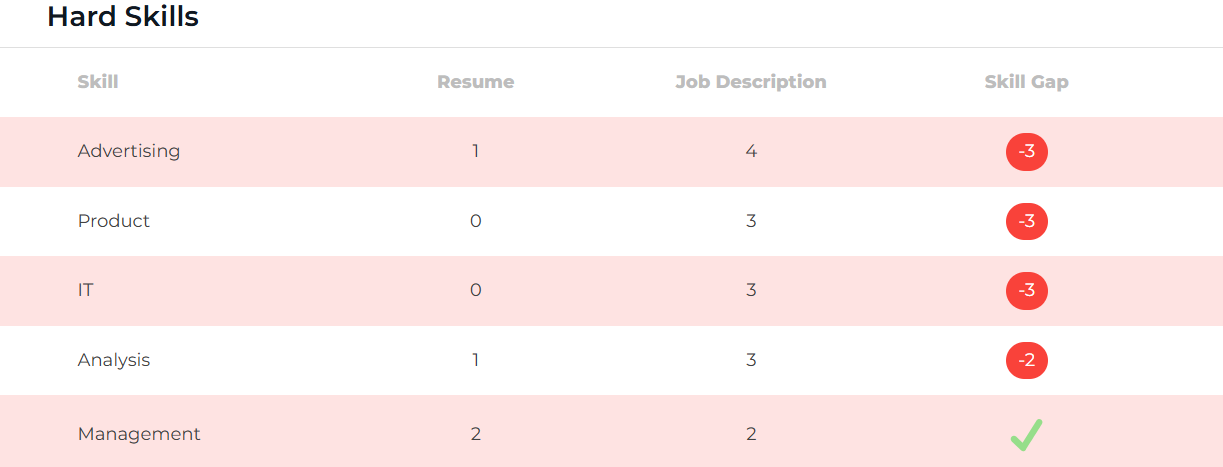
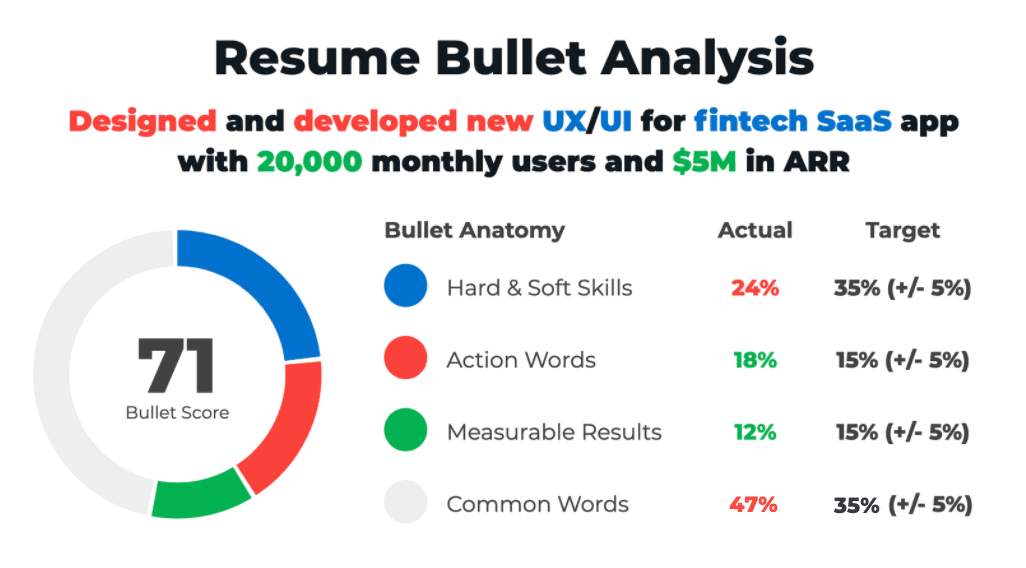















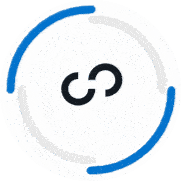



Thank you Austin. Awesome article! I’m so happy I found Cultivated Culture. The content you’re posting is absolutely amazing. It has helped me with almost any problem I encountered during my job search. I absolutely love your career advice. Thank you.
As a recent graduate i want to create resume/CV for myself as i am going to start looking for job but didn’t know how and what should i include on resume so started searching over net and found out this article which i think is great help for students like us. Thank You.
Thank you for this informative how-to. I’m recently back on the search for a job after many many happy years at the same place. This is truly helpful for those of us without a tuned-up resume, and will no doubt prove very beneficial.
Thanks again!
>Resume Format Option #4: Creative/Non-Traditional
Just a word of warning – if the job you’re applying to isn’t a creative one, it’s probably best to pass on this option. On the other hand, if you ARE trying to land a job that involves creativity, this might be the best option of them all. Past experience and skills and all that is great, but being able to showcase your talents and genius right there in the resume itself is something that only a few people can do well. And if one of those people is you, then hey, go for it!
Awsome article! It gave me a few ideas of how to re-write my resume. Thanks a lot.
Right on! That’s the whole goal, glad to hear it sparked a few ideas.
Thank you for this wonderful post, Austin! This is extremely helpful.
Do you have suggestions for including or coming up with metrics for your job when it’s hard to quantify the results at your job OR some metrics/numbers are confidential to be published on your resume/cover letter?
My job title is Systems Analyst / Product Owner, and I am looking to apply for Product Management roles.
Do you have any suggestions/templates for coming up with metrics specifically for the Product Owner/Business Systems Analyst role? That is one part of updating my Resume that I am really struggling with. Any help is much appreciated. Thanks in advance!
You bet Ankit! Thanks so much for reading.
There is almost always some way to spin up metrics or results for what you’ve done. The best questions to ask yourself are:
– Why is the company paying me to do this? How are they measuring success?
– What teams/people is my work impacting? How can I leverage their results?
For example, if you release a product, how did that product impact sales, increase efficiency, or drive retention? Or if you fixed a bug, how did that improve satisfaction or usability?
Someone is leveraging your work or paying attention to it and saying “it’s worth keeping Ankit around.” You need to find those people, figure out what results they’ve seen from your work, and add those in.
Austin you are just awesome
I don’t read so long content but while I was in your blog, I couldn’t stay away as each point is precise and to the point well explained!
Loved it
Nice! I’m super happy to hear it keeps you coming back Razor!
Hey there! I am seeking out some ways to enhance my clients resumes. They are all young adults with disabilities and need some amplification to their entry level resumes. If you have time please send over some tips. Best, Taylor
Hey Taylor, sounds like you’re doing really important work. This article is definitely a great place to start, I’d also recommend checking out this resume builder. It incorporates all of the info above and makes it easy to create a resume that gets results. It’s also 100% free!
Thank you Austin for such wonderful article for job-winning resume templates. Your article is extremely helpful and you can also check out other amazing resume writing templates from one des blog.
Thanks Andy, I appreciate the kind words!
I like how you said that when recruiters scan a resume, the first thing they look for are mistakes. My cousin is looking for a job and he says that it’s been hard to find a good job. Thanks for sharing this article, I will suggest to him to find a professional to help him write a nice resume so that he can get a job faster.
You got it Derek! With companies receiving hundreds, if not thousands, of resumes the easiest way for them to slim it down is by looking for mistakes. Running a resume through tools like Hemingway app or Grammarly is an easy way to make sure yours passes that check!
Hi Austin,
super useful as usual. I have a question though. I ran my resume through Jobscan. it is currently on 1 page and font size 10 (so rather packed…), however the jobscan analysis says I do not have enough characters on my cv.
I think you said that a 1 page resume is better. Currently based in Europe, I am still hesitating between 1 page and 2 pages. The analysis of Jobscan suggests I should probably have a 2 pages resume.
Any thoughts ?
thanks
Hey Xavier,
There is no absolute “right or wrong” answer here. Resumes are all about quality over quantity.
A one page resume full of fluff would be awful and a three page resume that’s jam packed with results and accomplishments would work great. On the flip side, a one page resume with amazing results will beat out a three pager full of fluff.
Instead of worrying about the length, I would focus on making sure your bullets follow the formula in this post. That will ensure that you’re using them to illustrate and drive value!